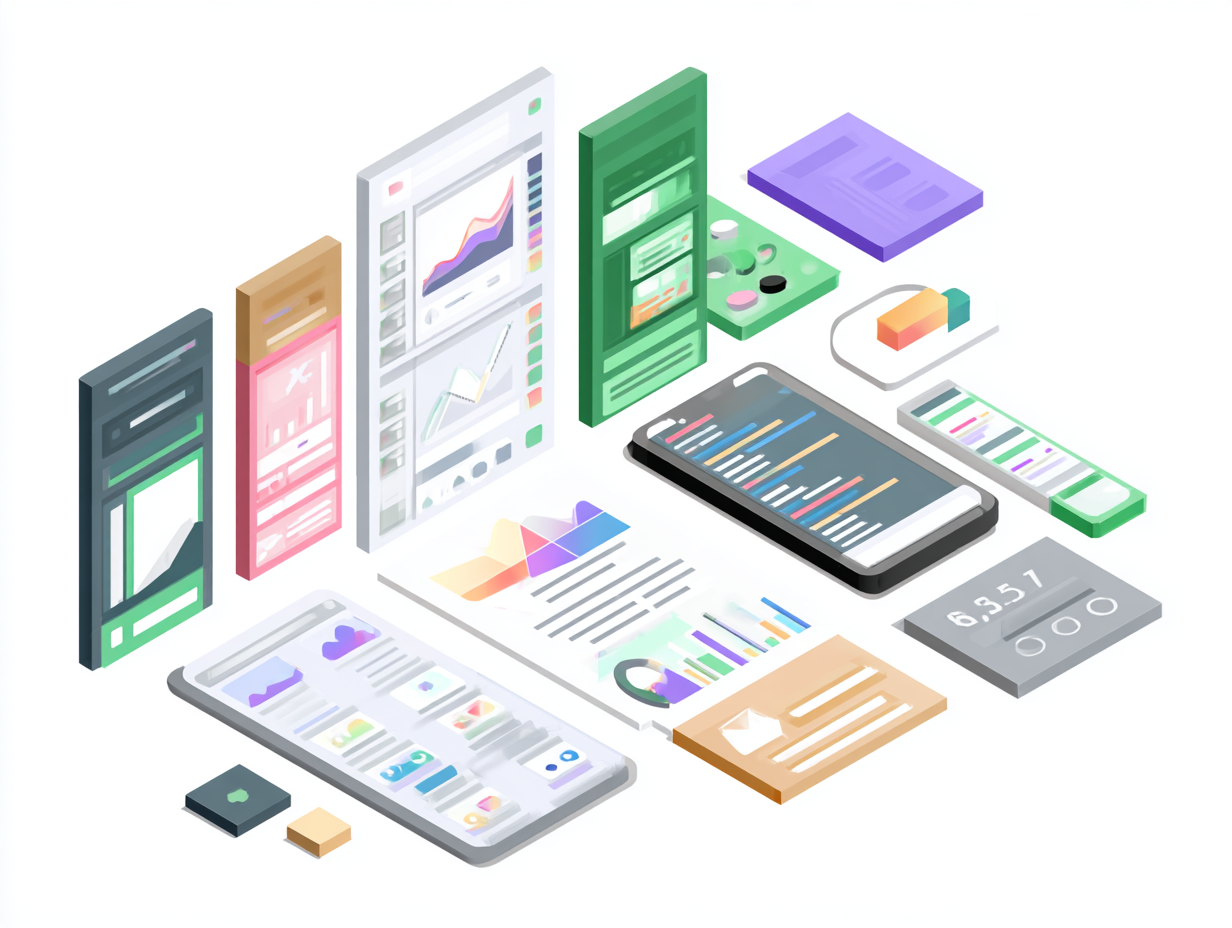
Testing is not just a good practice—it's essential for building reliable Flutter applications. Proper testing saves time, prevents bugs in production, and gives you confidence to refactor and add new features without breaking existing functionality.
Flutter provides excellent testing tools out of the box. This comprehensive guide covers unit testing, widget testing, integration testing, and advanced testing patterns used by successful Flutter teams. You'll learn to write tests that are maintainable, fast, and reliable.
UNIT TESTING: TEST YOUR LOGIC
Unit tests verify individual functions, methods, and classes in isolation. They're fast, easy to write, and form the foundation of your testing pyramid.
// Model class to test
class Calculator {
int add(int a, int b) => a + b;
int subtract(int a, int b) => a - b;
double divide(int a, int b) {
if (b == 0) throw ArgumentError('Cannot divide by zero');
return a / b;
}
}
// Unit tests
import 'package:flutter_test/flutter_test.dart';
import 'package:your_app/calculator.dart';
void main() {
group('Calculator', () {
late Calculator calculator;
setUp(() {
calculator = Calculator();
});
test('should add two numbers correctly', () {
// Arrange
const a = 5;
const b = 3;
// Act
final result = calculator.add(a, b);
// Assert
expect(result, equals(8));
});
test('should subtract two numbers correctly', () {
expect(calculator.subtract(10, 3), equals(7));
});
test('should divide two numbers correctly', () {
expect(calculator.divide(10, 2), equals(5.0));
});
test('should throw error when dividing by zero', () {
expect(
() => calculator.divide(10, 0),
throwsA(isA<ArgumentError>()),
);
});
});
group('Calculator Edge Cases', () {
test('should handle negative numbers', () {
final calculator = Calculator();
expect(calculator.add(-5, 3), equals(-2));
expect(calculator.subtract(-5, -3), equals(-2));
});
test('should handle large numbers', () {
final calculator = Calculator();
expect(calculator.add(999999, 1), equals(1000000));
});
});
}🎯 Unit Testing Best Practices:
- • Follow AAA pattern: Arrange, Act, Assert
- • Use descriptive test names that explain behavior
- • Test one thing at a time
- • Use setUp() and tearDown() for common initialization
- • Group related tests together
WIDGET TESTING: TEST YOUR UI
Widget tests verify that your UI components work correctly. They test user interactions, state changes, and widget behavior in a controlled environment.
// Widget to test
class CounterWidget extends StatefulWidget {
@override
_CounterWidgetState createState() => _CounterWidgetState();
}
class _CounterWidgetState extends State<CounterWidget> {
int _counter = 0;
void _increment() {
setState(() {
_counter++;
});
}
@override
Widget build(BuildContext context) {
return Scaffold(
appBar: AppBar(title: Text('Counter')),
body: Center(
child: Column(
mainAxisAlignment: MainAxisAlignment.center,
children: [
Text('Count: $_counter', key: Key('counter-text')),
ElevatedButton(
key: Key('increment-button'),
onPressed: _increment,
child: Text('Increment'),
),
],
),
),
);
}
}
// Widget tests
import 'package:flutter/material.dart';
import 'package:flutter_test/flutter_test.dart';
import 'package:your_app/counter_widget.dart';
void main() {
group('CounterWidget', () {
testWidgets('should display initial counter value', (WidgetTester tester) async {
// Arrange & Act
await tester.pumpWidget(MaterialApp(home: CounterWidget()));
// Assert
expect(find.text('Count: 0'), findsOneWidget);
expect(find.text('Increment'), findsOneWidget);
});
testWidgets('should increment counter when button is pressed', (WidgetTester tester) async {
// Arrange
await tester.pumpWidget(MaterialApp(home: CounterWidget()));
// Act
await tester.tap(find.byKey(Key('increment-button')));
await tester.pump(); // Trigger rebuild
// Assert
expect(find.text('Count: 1'), findsOneWidget);
expect(find.text('Count: 0'), findsNothing);
});
testWidgets('should increment multiple times', (WidgetTester tester) async {
await tester.pumpWidget(MaterialApp(home: CounterWidget()));
// Tap button 3 times
for (int i = 0; i < 3; i++) {
await tester.tap(find.byKey(Key('increment-button')));
await tester.pump();
}
expect(find.text('Count: 3'), findsOneWidget);
});
});
group('CounterWidget Accessibility', () {
testWidgets('should be accessible', (WidgetTester tester) async {
await tester.pumpWidget(MaterialApp(home: CounterWidget()));
// Check semantic labels
expect(tester.getSemantics(find.byKey(Key('counter-text'))),
matchesSemantics(label: 'Count: 0'));
});
});
}🔧 Widget Testing Tips:
- • Use keys to reliably find widgets
- • Call pump() after state changes
- • Test user interactions like taps and scrolls
- • Verify widget properties and behavior
- • Test accessibility features
INTEGRATION TESTING: END-TO-END
Integration tests verify that different parts of your app work together correctly. They test complete user flows and real app behavior on devices or emulators.
// integration_test/app_test.dart
import 'package:flutter/material.dart';
import 'package:flutter_test/flutter_test.dart';
import 'package:integration_test/integration_test.dart';
import 'package:your_app/main.dart' as app;
void main() {
IntegrationTestWidgetsFlutterBinding.ensureInitialized();
group('App Integration Tests', () {
testWidgets('complete user flow test', (WidgetTester tester) async {
// Start the app
app.main();
await tester.pumpAndSettle();
// Test login flow
await tester.enterText(find.byKey(Key('email-field')), 'test@example.com');
await tester.enterText(find.byKey(Key('password-field')), 'password123');
await tester.tap(find.byKey(Key('login-button')));
await tester.pumpAndSettle();
// Verify successful login
expect(find.text('Welcome Back!'), findsOneWidget);
// Test navigation to profile
await tester.tap(find.byKey(Key('profile-tab')));
await tester.pumpAndSettle();
// Verify profile screen
expect(find.text('Profile'), findsOneWidget);
expect(find.text('test@example.com'), findsOneWidget);
// Test logout
await tester.tap(find.byKey(Key('logout-button')));
await tester.pumpAndSettle();
// Verify back to login screen
expect(find.byKey(Key('login-button')), findsOneWidget);
});
testWidgets('offline functionality test', (WidgetTester tester) async {
app.main();
await tester.pumpAndSettle();
// Simulate offline mode
await tester.binding.defaultBinaryMessenger.setMockMethodCallHandler(
const MethodChannel('connectivity_plus'),
(MethodCall methodCall) async {
if (methodCall.method == 'check') {
return 'none'; // No connectivity
}
return null;
},
);
// Test app behavior when offline
await tester.tap(find.byKey(Key('refresh-button')));
await tester.pumpAndSettle();
expect(find.text('No internet connection'), findsOneWidget);
});
});
group('Performance Tests', () {
testWidgets('scroll performance test', (WidgetTester tester) async {
app.main();
await tester.pumpAndSettle();
// Navigate to list screen
await tester.tap(find.byKey(Key('list-tab')));
await tester.pumpAndSettle();
// Measure scroll performance
final Stopwatch stopwatch = Stopwatch()..start();
await tester.fling(find.byType(ListView), const Offset(0, -500), 1000);
await tester.pumpAndSettle();
stopwatch.stop();
// Assert reasonable performance (adjust threshold as needed)
expect(stopwatch.elapsedMilliseconds, lessThan(1000));
});
});
}🎯 Integration Testing Best Practices:
- • Test critical user flows end-to-end
- • Use pumpAndSettle() for async operations
- • Test on real devices when possible
- • Mock external dependencies appropriately
- • Measure and test performance
ADVANCED TESTING PATTERNS
Take your testing to the next level with mocking, golden tests, and testing patterns that make your tests more maintainable and reliable.
// Mocking with Mockito
import 'package:mockito/mockito.dart';
import 'package:mockito/annotations.dart';
@GenerateMocks([ApiService, DatabaseService])
import 'test_file.mocks.dart';
class UserRepository {
final ApiService apiService;
final DatabaseService dbService;
UserRepository(this.apiService, this.dbService);
Future<User> getUser(String id) async {
try {
final user = await apiService.fetchUser(id);
await dbService.saveUser(user);
return user;
} catch (e) {
return await dbService.getUser(id);
}
}
}
// Test with mocks
void main() {
group('UserRepository', () {
late MockApiService mockApiService;
late MockDatabaseService mockDbService;
late UserRepository userRepository;
setUp(() {
mockApiService = MockApiService();
mockDbService = MockDatabaseService();
userRepository = UserRepository(mockApiService, mockDbService);
});
test('should return user from API and save to database', () async {
// Arrange
const userId = '123';
final expectedUser = User(id: userId, name: 'John Doe');
when(mockApiService.fetchUser(userId))
.thenAnswer((_) async => expectedUser);
when(mockDbService.saveUser(expectedUser))
.thenAnswer((_) async => {});
// Act
final result = await userRepository.getUser(userId);
// Assert
expect(result, equals(expectedUser));
verify(mockApiService.fetchUser(userId)).called(1);
verify(mockDbService.saveUser(expectedUser)).called(1);
});
test('should fallback to database when API fails', () async {
// Arrange
const userId = '123';
final expectedUser = User(id: userId, name: 'John Doe');
when(mockApiService.fetchUser(userId))
.thenThrow(Exception('Network error'));
when(mockDbService.getUser(userId))
.thenAnswer((_) async => expectedUser);
// Act
final result = await userRepository.getUser(userId);
// Assert
expect(result, equals(expectedUser));
verify(mockApiService.fetchUser(userId)).called(1);
verify(mockDbService.getUser(userId)).called(1);
verifyNever(mockDbService.saveUser(any));
});
});
}
// Golden Tests for UI consistency
testWidgets('login screen golden test', (WidgetTester tester) async {
await tester.pumpWidget(MaterialApp(home: LoginScreen()));
await expectLater(
find.byType(LoginScreen),
matchesGoldenFile('golden/login_screen.png'),
);
});
// Custom matchers
Matcher hasErrorMessage(String message) {
return predicate<Widget>((widget) {
if (widget is Text) {
return widget.data == message &&
widget.style?.color == Colors.red;
}
return false;
}, 'has error message: $message');
}🚀 Advanced Testing Tips:
- • Use dependency injection for easier testing
- • Mock external services and APIs
- • Create golden tests for UI consistency
- • Write custom matchers for domain-specific assertions
- • Use test data builders for complex objects
THE TESTING PYRAMID
🔍 UNIT TESTS
70% of your tests
- • Fast execution
- • Isolated components
- • Easy to debug
- • High coverage
🎨 WIDGET TESTS
20% of your tests
- • UI interactions
- • State management
- • Widget behavior
- • Moderate speed
🎯 INTEGRATION TESTS
10% of your tests
- • End-to-end flows
- • Real user scenarios
- • Full app testing
- • Slower execution


